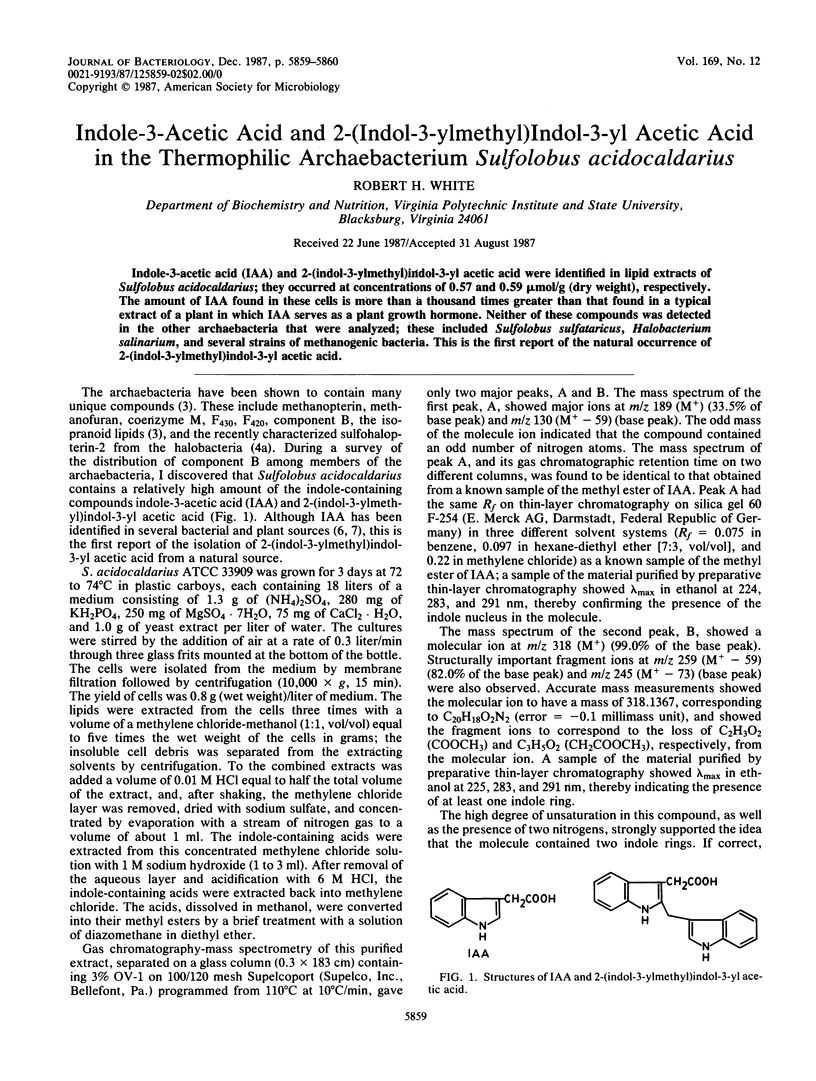Abstract
Indole-3-acetic acid (IAA) and 2-(indol-3-ylmethyl)indol-3-yl acetic acid were identified in lipid extracts of Sulfolobus acidocaldarius; they occurred at concentrations of 0.57 and 0.59 mumol/g (dry weight), respectively. The amount of IAA found in these cells is more than a thousand times greater than that found in a typical extract of a plant in which IAA serves as a plant growth hormone. Neither of these compounds was detected in the other archaebacteria that were analyzed; these included Sulfolobus sulfataricus, Halobacterium salinarium, and several strains of methanogenic bacteria. This is the first report of the natural occurrence of 2-(indol-3-ylmethyl)indol-3-yl acetic acid.
Full text
PDF

Selected References
These references are in PubMed. This may not be the complete list of references from this article.
- Fox L. R., Purves W. K., Nakada H. I. The role of horseradish peroxidase in indole-3-acetic acid oxidation. Biochemistry. 1965 Dec;4(12):2754–2763. doi: 10.1021/bi00888a028. [DOI] [PubMed] [Google Scholar]
- Jones W. J., Nagle D. P., Jr, Whitman W. B. Methanogens and the diversity of archaebacteria. Microbiol Rev. 1987 Mar;51(1):135–177. doi: 10.1128/mr.51.1.135-177.1987. [DOI] [PMC free article] [PubMed] [Google Scholar]
- Kushwaha S. C., Kates M., Kramer J. K. Occurrence of indole in cells of extremely halophilic bacteria. Can J Microbiol. 1977 Jun;23(6):826–828. doi: 10.1139/m77-121. [DOI] [PubMed] [Google Scholar]


